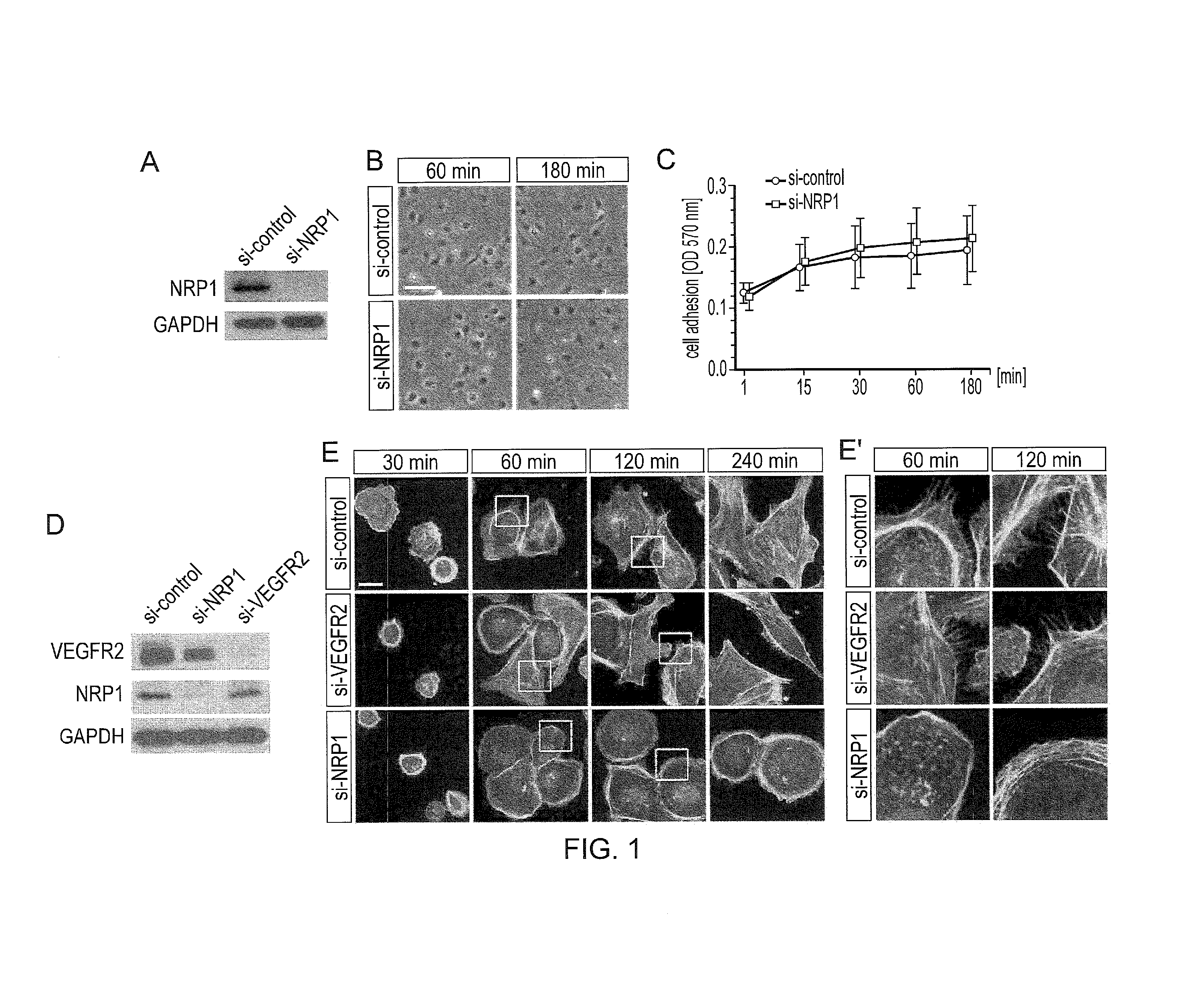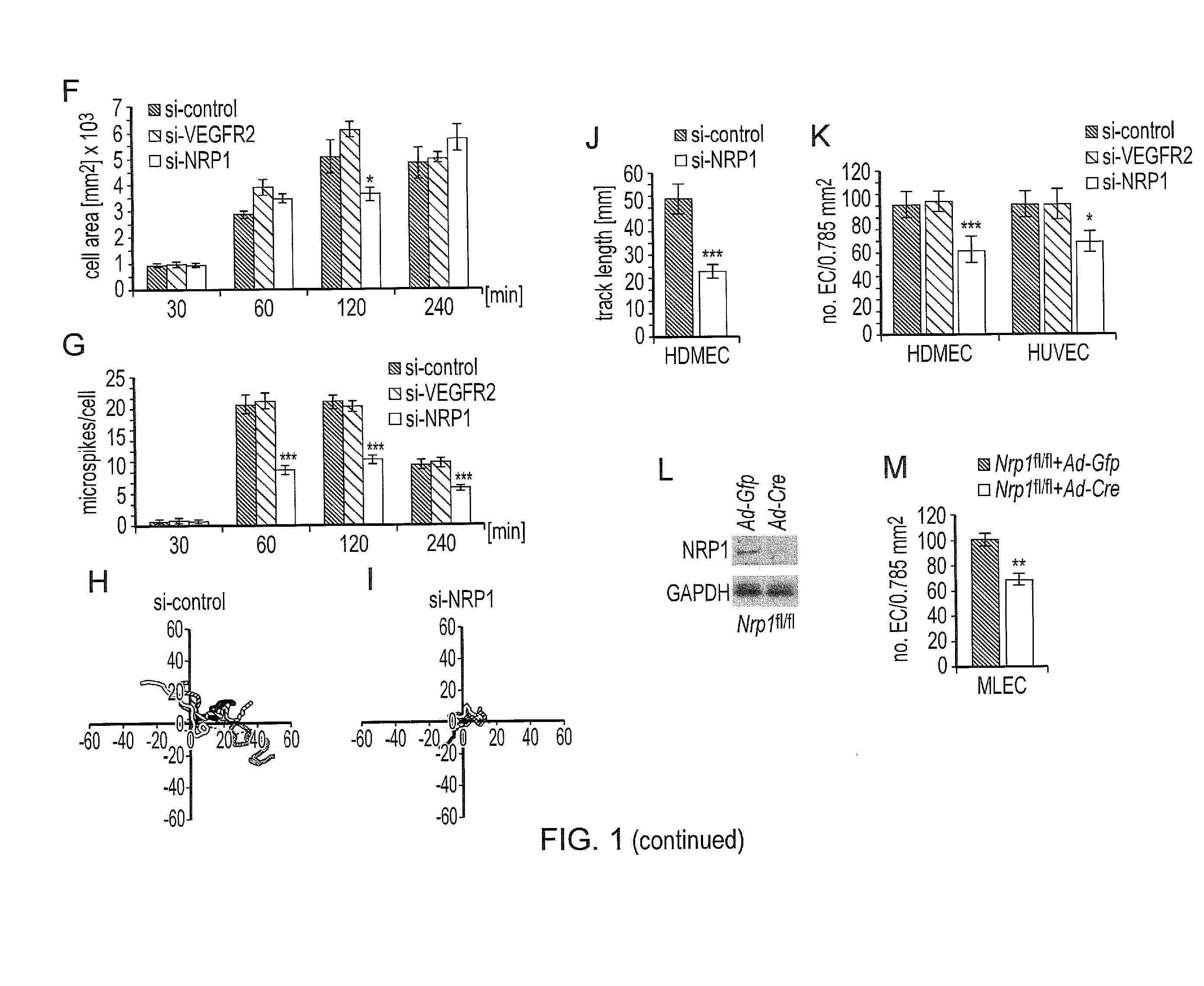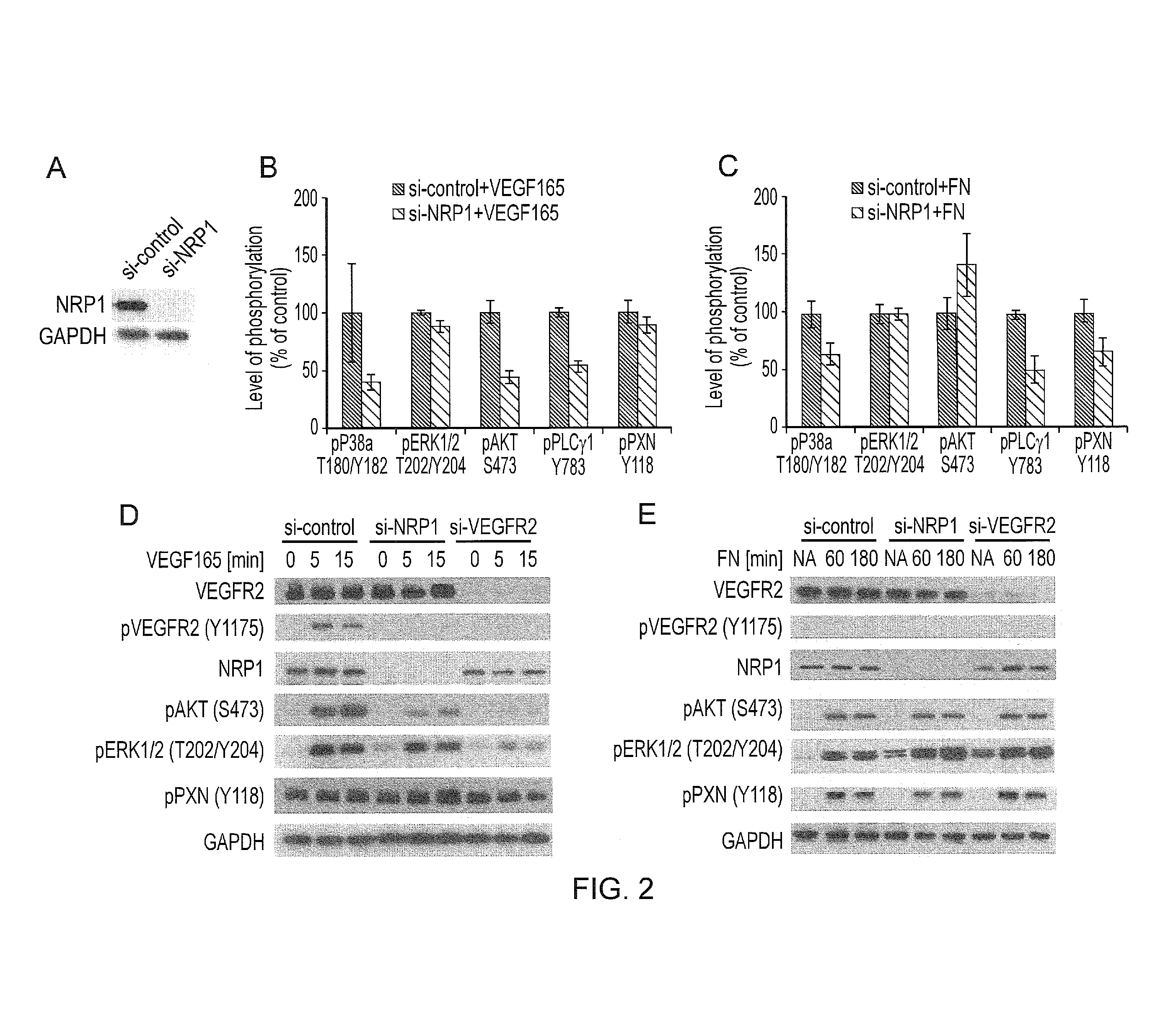Abl1 inhibitor for treating and preventing ocular neovascularisation
a technology of ocular neovascularisation and abl1 inhibitor, which is applied in the direction of transferases, drug compositions, enzymology, etc., can solve the problems of repeated eye injections, eye damage, and eye damage, and achieve the effect of inhibiting endothelial cell actin remodelling and/or endothelial cell migration, and inhibiting angiogenesis
- Summary
- Abstract
- Description
- Claims
- Application Information
AI Technical Summary
Benefits of technology
Problems solved by technology
Method used
Image
Examples
example 1
NRP1 Promotes Spreading and Actin Remodelling of FN-Stimulated EC Independently of Roles in Cell Adhesion and VEGFR2
[0167]The requirement of NRP1 for endothelial cell (EC) adhesion, spreading and actin remodelling was examined. Human dermal microvascular EC (HDMEC) were used for these experiments because dermal vasculature naturally undergoes extensive angiogenesis during wound healing. HDMEC were transfected with a previously validated small interference (si) RNA that targets NRP1 or a control nonsense siRNA. Having confirmed the efficacy of this approach (FIG. 1A), HDMEC adhesion to tissue culture dishes coated with 10 μg / ml FN, a concentration that effectively promotes cell adhesion and migration, was tested, and it was determined that adhesion was not compromised by NRP1 deficiency (FIG. 1B,C). Adhesion of human umbilical cord EC (HUVEC) to plates coated with 10 μg / ml FN was also not impaired (data not shown). Conditions suitable to study FN-induced cell spreading, actin remodel...
example 2
NRP1 Promotes the Motility and Haptotactic Migration of FN-Stimulated EC
[0170]Tracking the behaviour of individual HDMEC after plating on FN demonstrated that control cells were significantly more motile than cells lacking NRP1 (FIG. 1H-J). Consistent with reduced motility, a transwell assay measuring ECM-induced haptotaxis demonstrated reduced migration of NRP1-deficient compared to control cells towards FN, but VEGFR2 knockdown did not affect migration (FIG. 1K). Similar results were obtained with HUVEC (FIG. 1K). To examine if NRP1 deficiency impaired EC migration in another species, mouse lung EC (MLEC) from Nrp1 conditional null (Nrp1fl / f1) mice were used in the transwell assay after infection with adenovirus expressing GFP as a control or CRE recombinase to downregulate NRP1 (FIG. 1L). As observed for human EC, migration onto FN substrates was significantly reduced in MLEC lacking NRP1 compared to controls (FIG. 1M).
[0171]NRP1 deficiency therefore impairs ECM-induced EC motili...
example 3
Identification of NRP1-Dependent ECM-Induced Signal Transduction Pathways
[0172]HDMEC were transfected with siNRP1 or control siRNA (FIG. 2A), and then serum-starved and stimulated with VEGF165 (FIG. 2B) or plated on FN (FIG. 2C). VEGF165-induced activation of the MAPK p38 in EC lacking NRP1 was reduced and additionally there was impaired FN-induced and NRP1-dependent P38 activation (FIG. 2B,C). The screen also showed that NRP1 downregulation in VEGF165-stimulated HDMEC reduced two other signal transduction pathways previously shown to operate downstream of growth factor signalling in EC, the MAPK kinase pathway involving ERK1 / 2 and the P13-kinase pathway activating AKT (FIG. 2B). Unexpectedly, however, NRP1 downregulation did not impair ERK1 / 2 and AKT phosphorylation in FN-simulated HDMEC (FIG. 2C).
[0173]NRP1 loss decreased both VEGF165- and FN-induced activation of PLCγ1 (FIG. 2B,C), known to promote the phosphorylation of the focal adhesion protein paxillin (PXN) downstream of FN-...
PUM
| Property | Measurement | Unit |
|---|---|---|
| time | aaaaa | aaaaa |
| concentration | aaaaa | aaaaa |
| adhesion | aaaaa | aaaaa |
Abstract
Description
Claims
Application Information
 Login to View More
Login to View More - R&D
- Intellectual Property
- Life Sciences
- Materials
- Tech Scout
- Unparalleled Data Quality
- Higher Quality Content
- 60% Fewer Hallucinations
Browse by: Latest US Patents, China's latest patents, Technical Efficacy Thesaurus, Application Domain, Technology Topic, Popular Technical Reports.
© 2025 PatSnap. All rights reserved.Legal|Privacy policy|Modern Slavery Act Transparency Statement|Sitemap|About US| Contact US: help@patsnap.com



